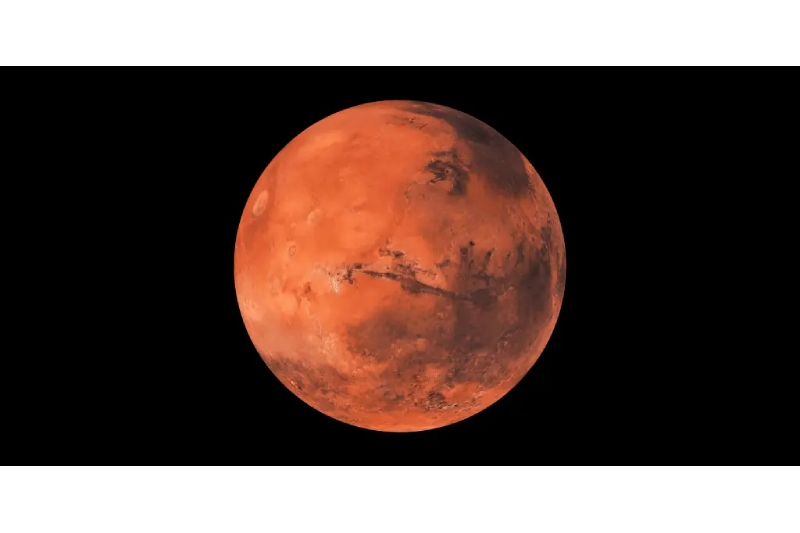Researchers claim to have found a massive volcano on Mars that is concealed from view.
Scientists reported the existence of the volcano, tentatively dubbed the Noctis, at the 55th Lunar and Planetary Science Conference on Wednesday in Texas. It was found next to an underground ice glacier east of Mars, close to the Red Planet’s equator. The volcano is 280 miles wide.
The 29,600-foot-tall volcano may have had glacier ice remnants close to its base, according to scientists, and it was active from ancient times until the present.
They claim that the discovery suggests a promising new area for life investigation and a possible location for both robotic and human exploration.
A recent study conducted in collaboration with the Mars Institute at NASA Ames Research Center and the SETI Institute provided specific findings.
The study’s principal author, planetary scientist Dr. Pascal Lee, said, “We realized we were inside a huge and deeply eroded volcano when we were examining the geology of an area where we had found the remains of a glacier last year.”
The location had been photographed by spacecraft orbiting Mars since Mariner 9 in 1971, according to scientists. However, the volcano had been eroded beyond recognition and had been “hiding in plain sight” for decades in one of Mars’ most famous areas, at the border between the enormous canyons of Valles Marineris (Valleys of Mariner) and the severely fractured, labyrinthine Noctis Labyrinthus (Labyrinth of the Night).
There is a thin layer of recent volcanic material in its southeast, and under that, glacial ice is probably still there.
But the scientists said that this eastern section of Noctis Labyrinthus’s stratified mesas and canyons showed its volcanic origins.
Many raised mesas that form an arc, reach a regional high, and slope downward away from the summit area designate the central summit area.
The soft outside hills stretch 140 miles in various directions.
Near the middle of the structure is a caldera remnant, which is the remains of a collapsed volcanic crater that was once home to a lava lake.
Throughout the structure’s circumference are many locations where lava flows, hydrated mineral deposits, and pyroclastic deposits composed of volcanic particle elements like ash, cinders, pumice, and tephra can be found.
“This area of Mars is known to have a wide variety of hydrated minerals spanning a long stretch of Martian history,” said Sourabh Shubham, a graduate student at the University of Maryland’s Department of Geology and the .
“A volcanic setting for these minerals had long been suspected, so it may not be too surprising to find a volcano here. In some sense, this large volcano is a long-sought ‘smoking gun.’”
The volcano has erupted in the present era, but the scientist claimed it is uncertain if it is currently active and could do again in the future.
Together with the volcano, the study documents the finding of 1,930-square-miles (about three-quarters the area of Delaware) of volcanic deposits inside the volcano’s boundaries, which feature numerous low, blister-like mounds that are rounded, elongated, and low.
This “blistered terrain” is thought to be a field of “rootless cones,” which are mounds created by steam swelling or explosive steam venting that occurs when a thin layer of hot volcanic material settles on top of a surface that is rich in ice or water.
Lee continued, calling the Noctis volcano site “exceptionally exciting” due to a number of variables.
“It’s an ancient and long-lived volcano so deeply eroded that you could hike, drive, or fly through it to examine, sample, and date different parts of its interior to study Mars’ evolution through time.”
“It has also had a long history of heat interacting with water and ice, which makes it a prime location for astrobiology and our search for signs of life.”
Topics #Mars #volcano










